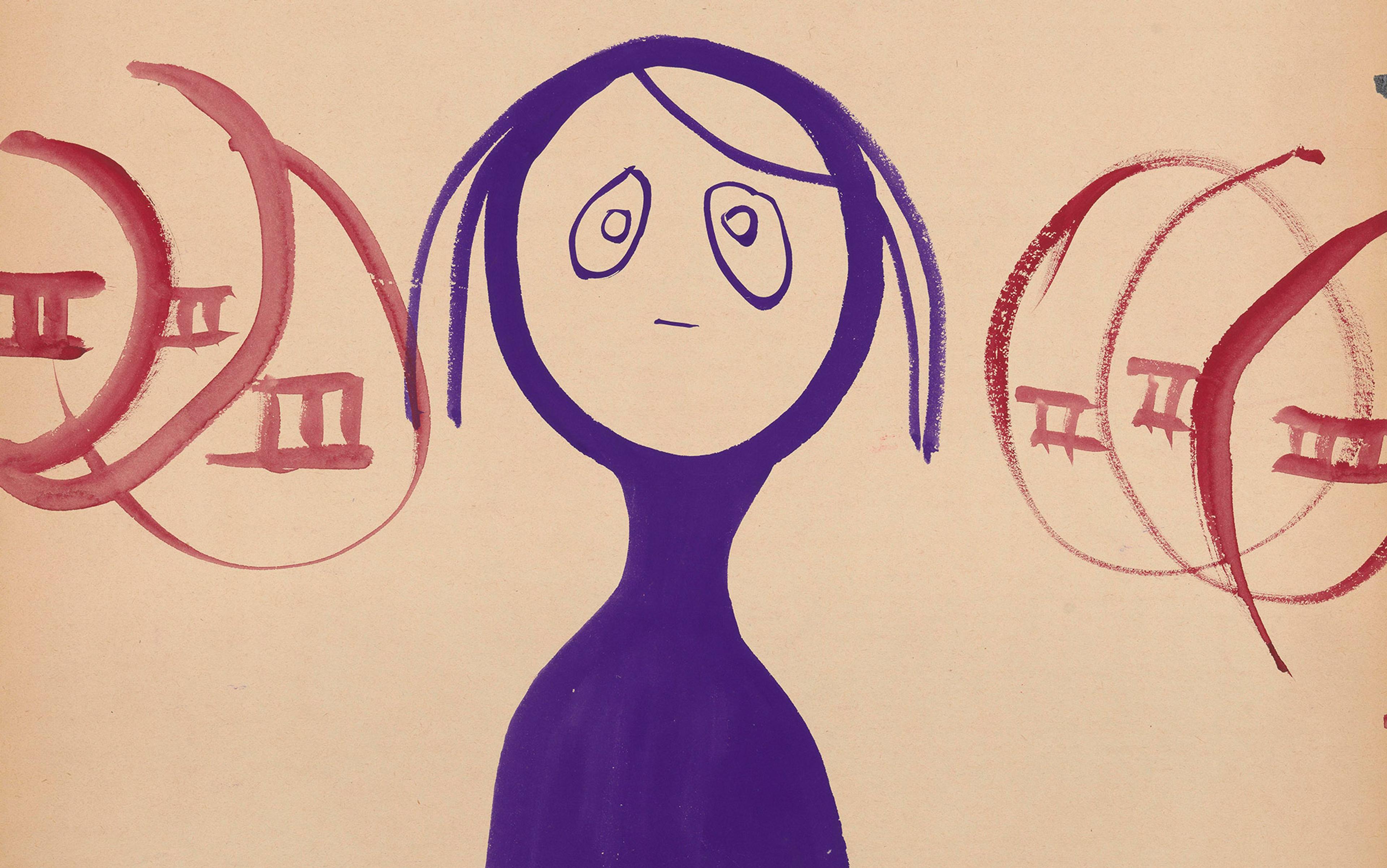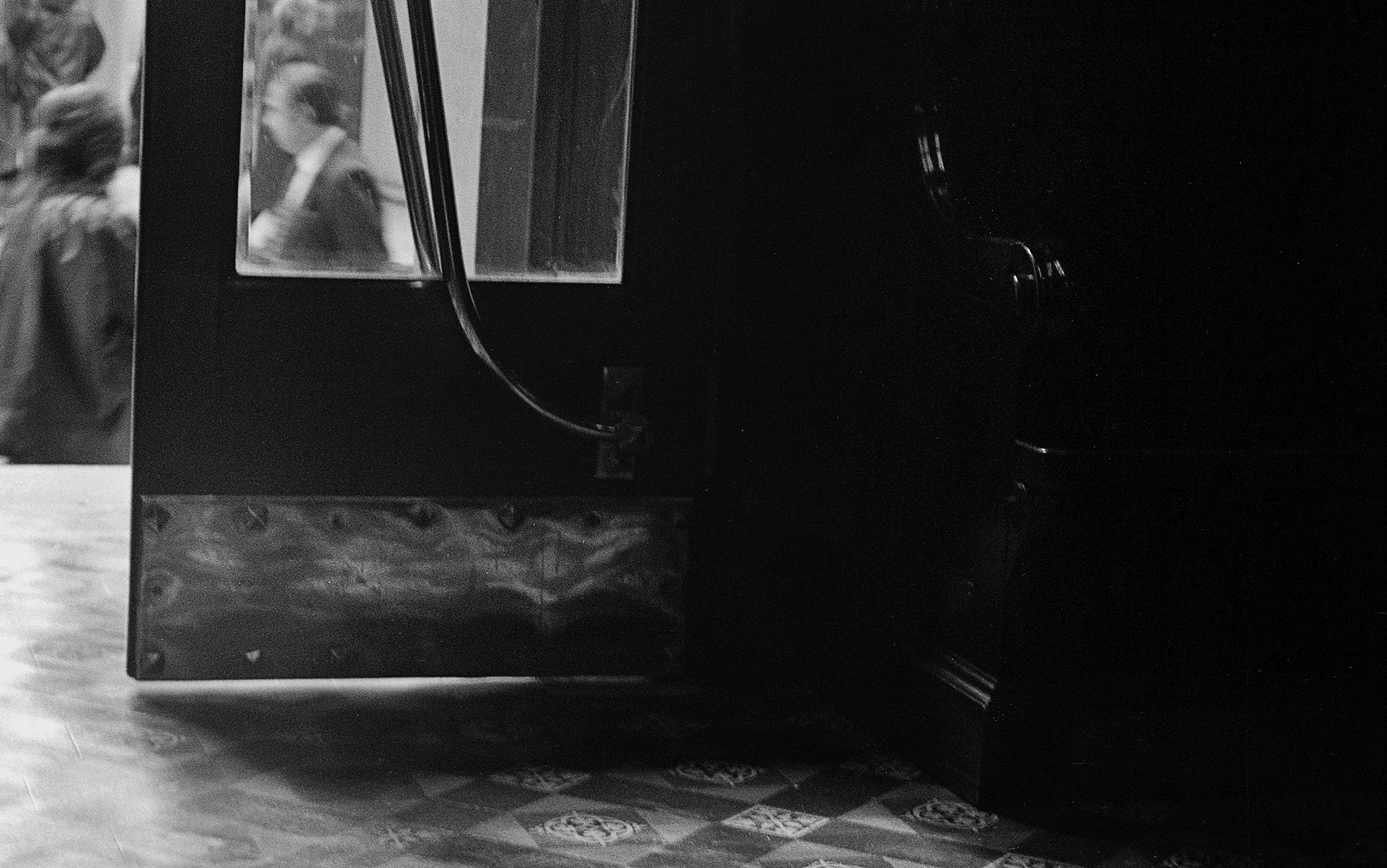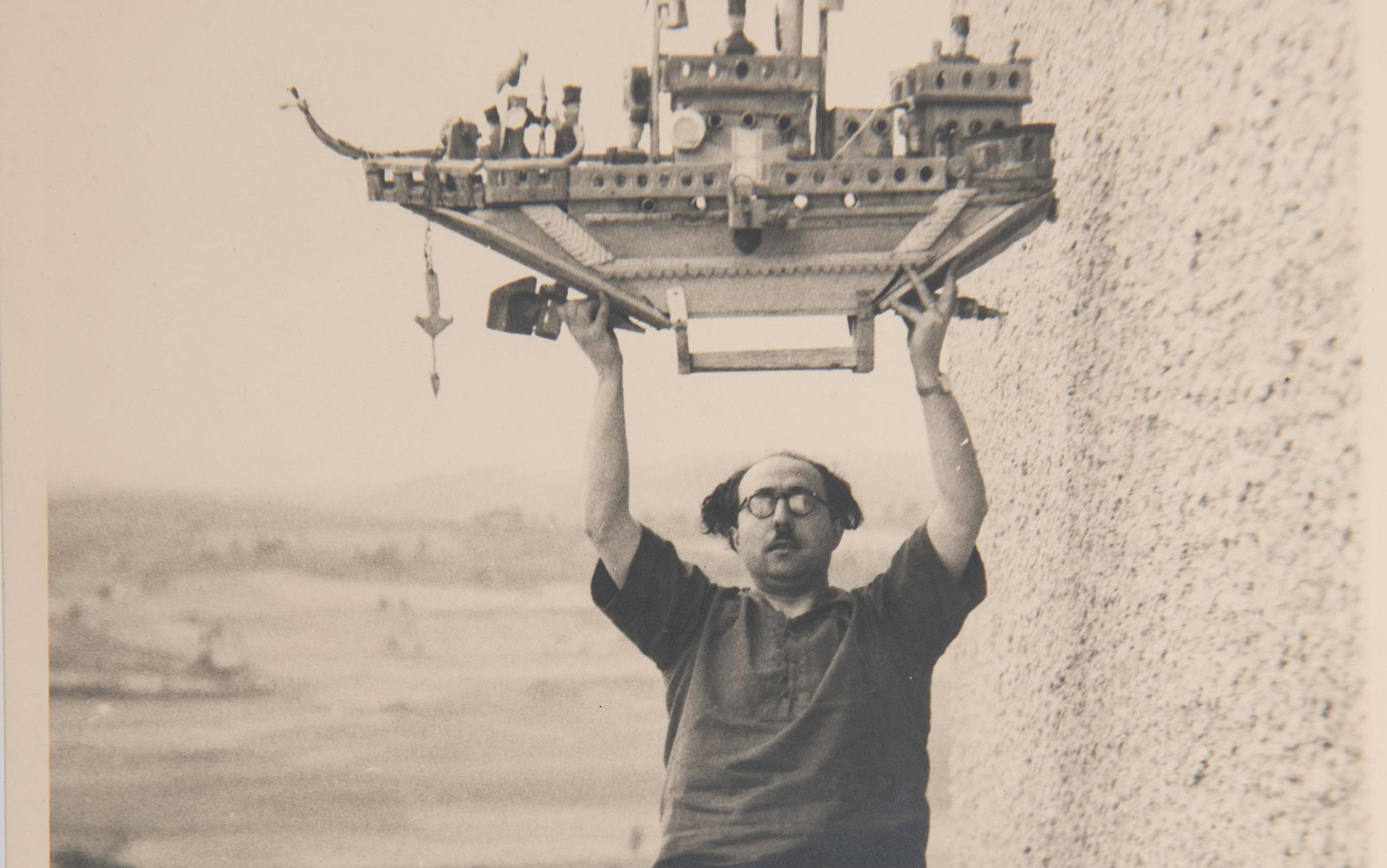Vitor Pordeus makes a good Hamlet. Bearded, handsome, angry at the world, he stands at the centre of his group of actors. Like a force of nature that fights to be heard against the wind blowing in from the Atlantic Ocean, he rails against the slings and arrows of outrageous fortune to a backdrop of palm trees and hot-dog stands.
Behind him, the sun drops like a giant orange behind the Dois Irmãos or Two Brothers, the picture‑postcard hills behind Ipanema beach and home to the recently gentrified Vidigal favela in Rio de Janeiro. The old King of Denmark sits on his throne, immutable. He’s a thin, frail man with only one leg. ‘Ser ou não ser,’ the chorus around him rises up: ‘To be or not to be.’ Then, a low hum, as the group starts to chant and dance their way around the circle. ‘Renascer,’ they sing –meaning: be reborn, revive.
This is no group of pampered actors. A banner with carnival streamers is emblazoned in gold, blue and orange with ‘Madness Hotel’, the name of the collective behind this production. The 20-odd performers have arrived at the sea’s edge from a psychiatric hospital in Rio’s densely populated and overheated North Zone. Pordeus is their doctor, though it might be more accurate now to describe him as an actor-director.
Theatre provides a rare stimulus for psychotic, schizophrenic and depressed patients, giving them an opportunity to communicate and interact constructively with others. ‘We are all actors; we take on our identity, we take on our culture,’ Pordeus says. Released from their fixed roles as catatonic, belligerent or withdrawn patients, his actors – Pordeus calls them clients rather than patients – are free to don different masks as characters from Shakespeare, and to live out a different reality for a few hours. In the safe, performative setting, new things can be said or tried out. As the circle moves round, it breaks at times for people to hug each other, for spats to be heard then ironed out, and for each player to start new chants which the others then follow.
Pordeus says that the success of his work can be seen clearly in the thousands of films and photographs he records of the performances, both beachside and in the ‘Madness Hotel and Spa’ at the Nise da Silveira Mental Health Institute in Rio de Janeiro. When the patients review these later on, they can see the progress they’ve made, but also better understand their own behaviour and interactions with others. He claims that patients who never spoke before joining the Madness Hotel and who now smile or spontaneously interact with others are proof of the healing power of theatre.
The project has attracted a wave of publicity in Brazil, and an artists’ residence now takes place once a year at the Madness Hotel hospital unit. Yet Pordeus is not without his critics. Funding for the project through the municipal authority is an ongoing challenge, and there is a clash between the Madness Hotel and those in charge of other units in the hospital.
‘There is a lot of conflict between us and the other doctors,’ Pordeus admits. ‘They attack us, they say it agitates the patients. They say the basis of therapy is drugs, and that’s not true.’ Pordeus’s critics say that the emphasis on freedom of expression away from the clear doctor-patient hierarchy creates insecurity and confusion among patients rather than providing a healthy outlet. Yet this is to miss the point, since Pordeus is an activist as much as a doctor; he seeks to challenge mainstream ideas about illness and treatment, and that is bound to stir protest.
In wider perspective, the Madness Hotel performances, with their songs and costumes, can be seen as a continuation of Brazilian cultural traditions. Samba, for example, has always brought people together to seek redemption through collective remembrances of past suffering.
During carnival in Rio, the streets are filled with people singing songs such as Agoniza Mas Não Morre: ‘Samba: agoniza mas não morre/ Alguém sempre te socorre/ Antes de suspiro derradeiro’ (Samba: agonise but don’t die/ Someone will always rescue you/ Before the final breath). Lyrics recall the shared traumas of slavery and the massacres of the poor by colonial authorities, while the powerful rhythms restore the African culture from which many of Brazil’s people were once violently removed. Crucially, this redemption is often to be found collectively and not individually in Brazilian culture – collectivism, of course, being a strong element of theatre.
The idea of using theatre as a tool for change was pioneered in Brazil by the late director and activist Augusto Boal who in the 1950s created the Theatre of the Oppressed, now world-renowned. In the Theatre of the Oppressed, drama became a framework in which people could visualise and understand the power dynamics at work in society and explore new possibilities through role play. These Boal-inspired ‘dress rehearsals for real life’ have been used in strife-torn locations such as Israel and Palestine, as well as all over Latin America and Europe. Boal believed that everyone is a self-contained spectator, actor and theatre in one; if we start by observing our actions and interactions, we can then go on to do things differently in the future.
The Nise da Silveira hospital itself, where the Madness Hotel is based, has a long tradition of using art and culture to release something inside people suffering even the most extreme mental illness. From 1946, the psychiatrist Nise da Silveira, a former student of Carl Jung, had patients paint and sculpt at the site that now bears her name, and the hospital still hosts a gallery of these works called the Museum of Images of the Unconscious, which opened in 1952. The paintings and sculptures express the torment of anxiety, depression and psychosis, but they are also frequently joyful and beautiful. Many of the artworks have been critically acclaimed, and some exhibited in conventional museums.
Da Silveira was working during a brutal era of mental health treatment, and fought against practices such as lobotomy and electroshock therapy in favour of more humane methods of treatment. Among the artists she cared for was Adelina Gomes, who arrived at the hospital in 1936 in a state of deep depression after her parents prevented her from having a relationship with a man of whom they disapproved. In her lifetime, Gomes created 17,500 works, including sculptures of leering satyrs and ancient gods – beings from a world less inhibited and restricted than her own.
doors were left unlocked, patients went unmedicated, and LSD was liberally handed out. Sean Connery visited at one point
Da Silveira was neither the first nor the only psychiatrist to champion a more humane approach to mental health patients or to observe the value of the arts as a form of treatment. In the 1920s, the Brazilian psychiatrist Osório César began using art with patients as a form of therapy. Around the same time in Germany, the psychiatrist Hans Prinzhorn amassed a collection of thousands of works of art produced by mental health patients in German-speaking hospitals in earlier decades, which for the first time were evaluated for their artistic value and not only for what they could reveal about mental illness.
The culmination of this movement came with the work of the Scottish psychiatrist R D Laing in the 1960s, at the height of the counter-cultural revolution. In 1965, Laing founded a psychiatric experiment at Kingsley Hall, a former community centre in the East End of London, in which doors were left unlocked, patients (including schizophrenics) went unmedicated, and LSD was liberally handed out. The patients were joined by dropouts and artists – the actor Sean Connery visited at one point. While the centre closed five years later and many of Laing’s methods have since been discredited, Kingsley Hall thrived at a time when the absolute authority of doctors and the definition of insanity was itself being questioned. Madness, Laing said, was ‘a perfectly rational adjustment to an insane world’. One of Laing’s patients, Mary Barnes, went on to become an artist and poet of some renown.
Since Kingsley Hall closed in 1970, mental health treatment has changed in the UK, with a move away from the institutionalisation of patients and a greater acceptance of tools including the arts in treatment. Yet many of the questions Laing raised 50 years ago remain pertinent, for if creative endeavours can have therapeutic and transformative value for mental health patients, who might become accomplished performers and artists themselves, then surely it points to the possibility of a deeper link between madness and creativity?
Plato and Socrates believed that poets and priests could commune with the gods through accessing a kind of ‘divine madness’, thereby identifying the source of creative inspiration and insanity as one and the same, and the ‘mad artist’ has remained a persistent motif in many cultures, from Vincent van Gogh to Kanye West. Eccentric behaviour is indulged, encouraged or even expected in creative people, who enjoy a privileged position outside of the normal rules of society, and who often play up to this idea as if to underscore their untrammelled creativity.
In her book Touched with Fire: Manic-depressive Illness and the Artistic Temperament (1991), Kay Redfield Jamison points to a wealth of evidence that supports such a link, among them studies that show elevated rates of mood disorders in highly creative people, and which further suggest that the link is genetic. Jamison, an American clinical psychologist, who is Professor in Mood Disorders at the Johns Hopkins University School of Medicine in Baltimore and who is bipolar herself, quotes the study of 113 German-speaking artists, writers, architects and composers compiled by the Austrian psychiatrist Adele Juda in 1944. Juda found that there were more suicides and more ‘insane and neurotic’ individuals in this group than could be found in the normal population, and that the same predisposition existed in many of the artists’ family members. Seen this way, madness might be a blessing of sorts, a kind of portal into a unique vision of the world.
‘Creative work can act as a way of structuring chaotic emotions and thoughts, and creating a distance from the source of despair’
Specifically, Jamison argues that the manias of bipolar individuals can lead to elevated sense awareness and increased confidence and productivity, all of which lend themselves well to artistic pursuits. Other researchers believe that the lifestyle of people in artistic professions, with its solitude and financial instability, along with not infrequent drink and drug abuse, provokes mental health problems, not any genetic predisposition. For them, illness represents only suffering: a pain that cannot and should not be glamorised or lent any mystique by the caricature of the insane artist.
Yet suffering can be alleviated through the discipline of creative practices that serve to weave formless, unarticulated pain into something tangible, ordered and ultimately pleasurable. As Jamison writes: ‘Creative work can act not only as a means of escape from pain, but also as a way of structuring chaotic emotions and thoughts, numbing pain through abstraction and the rigors of disciplined thought, and creating a distance from the source of despair.’ Thus some artists with mental health problems might have partly sought out their profession because of the relief it provides, consciously or not. For poets or painters, the outlet for these emotions is individual, while a shared theatrical or musical experience has the potential to effect a collective catharsis and transformation.
For all their artistic opportunities, many of Vitor Pordeus’s patients in Rio de Janeiro still receive conventional treatment and medication, too: Pordeus recognises that times of violent crisis, for instance, still require medical intervention. Since Laing’s radical experiments in the 1960s, the idea that unbridled self-expression alone can cure all types of mental illness has less credence.
The question of the degree to which mental illness can be explained as a legitimate response to environmental stresses, and how much of it is genetic, remains unresolved. There is no single test to diagnose schizophrenia, and doctors sometimes disagree on a patient’s diagnosis. When Luciana, one of Pordeus’s schizophrenic patients, speaks about the constant gun battles between police and gangs in the community where she grew up, her hands shake with the memory. ‘In Brazil, we have very… ostensible policing. Shoot‑outs all the time… it produces panic and fear,’ she says.
The daughter of a schizophrenic mother, Luciana’s illness could easily be explained as an inherited disorder. But what is the sane response to such a brutal reality? And if the environment can even partly be blamed, then can a more benign, supportive environment reverse the damage? Luciana does not have an answer, but she says that she finds the ritual of dancing, singing, hugging and performing against a backdrop of the ocean preferable to the isolation and boredom of the conventional mental health units she has experienced in the past. ‘I live in the hospital, but in the other wards there isn’t much to do. People just eat and sleep. Here, we hug each other, act and perform theatre. It has given a value to my life,’ she says.
‘It’s no coincidence that everyone here is from the popular classes,’ says Pordeus. ‘They have all lived through the worst of this city.’ Being poor is not only disenfranchising, it has exposed many people to increased levels of violence, poor housing and fragmented family situations. Not to mention the worst of mental health treatment in many cases. Several of Pordeus’s current patients were transferred to the Nise da Silveira after the closure of the Santa Edwiges psychiatric hospital in east Rio, described by one prosecutor as ‘a real medieval dungeon’ where neglected patients lived in rooms where the windows had no glass in them and the doors were tied shut with rope.
The players discard their lurid costumes and plunge into the Atlantic Ocean – an act of baptism in this staged rebirth
At the most basic level of affect, Pordeus’s performances provide a space in which patients can acknowledge each other. They look one another in the eye and respond to each other’s gestures and words. ‘Cuidado do outro, cuidado de mim,’ they sing: look after the other, look after me. This might not be enough to repair the most severe psychoses, but it is surely fundamental to the happiness and self-esteem of any individual.
The Madness Hotel attempts to recover many things that are in danger of being lost, from the roots of Brazilian culture, to the idea of Shakespeare as populist street theatre instead of an art form for the elite. Most of all, it restores this idea of how vital we are to each other’s recovery.
As Pordeus’s production of Hamlet draws to a close, the beach is dark and the lights of Vidigal glitter magically on the hill. One patient who stood at the side of the circle at the beginning, smoking and swearing at the others, has since joined in. Ophelia is dead, Hamlet is dead, the King of Denmark is dead. The players discard their lurid costumes and plunge into the Atlantic Ocean – an act of baptism in this staged rebirth. The sun has set on this performance, but this is not really the end. ‘If you don’t face your dark side, you can’t reach your sun,’ Pordeus says.
The nature of ritual is that it must be repeated again and again. Next week, they will all be back.






